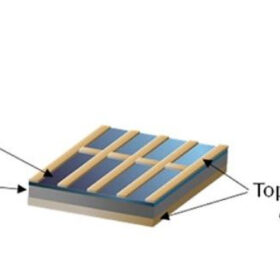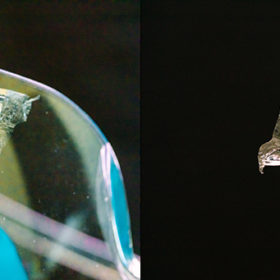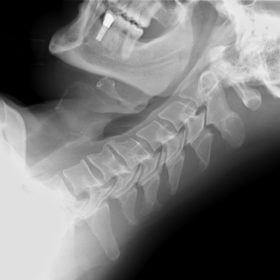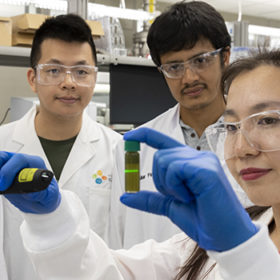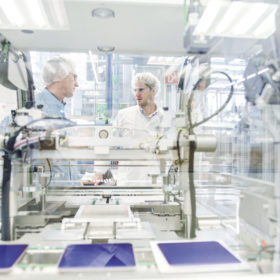PEDOT:PSS/silicon solar cell built at room temperature with 10.1% efficiency
Japanese researchers have fabricated a heterojunction (HJT) solar cell with silicon and a polymer material known as PEDOT:PSS under room temperature conditions. It has an efficiency of 10.1%, an open-circuit voltage of 0.57 V, a short-circuit current density of 33.3 mA/cm2, and a fill factor of 0.53.
A cell so thin, it can rest on a soap bubble
Scientists at Saudia Arabia’s King Abdullah University of Science and Technology demonstrated an organic PV cell that can simply be printed onto a piece of paper. The cell set a new efficiency record for a fully inkjet-printed device, and its designers envisage applications in integrated medical sensors.
Scientists in China give flexible perovskites a backbone
A team of researchers led by Nanchang University in China trialed a polymer based hole transport layer to flexible perovskite solar cells, using a glue to attach it to the active perovskite. The team was able to assemble the 19.87%-efficient cells into a small flexible module suitable for wearable solar applications, and says its design was inspired by the structure and movements of human vertebrae.
Tungsten disulfide helps organic solar cell reach 17% efficiency
Researchers from Saudi Arabia’s King Abdullah University of Science and Technology claim to have developed a highly performant organic PV cell using tungsten disulfide flakes a few atoms thick. The stability of the device, however, is still to be evaluated.
MIT scientists develop a coating for perovskites
Researchers at the Massachusetts Institute of Technology have developed a transparent coating they successfully incorporated into a perovskite solar cell, increasing efficiency and stability. The group says with further improvements the material could be used as a simpler, less expensive alternative to widely used indium tin oxide as a transparent conductive material for a range of applications.
Sorbitol admixture to passivation layer increases HJT conversion efficiency
The race to the theoretical maximum conversion efficiency continues and with new lab results in, it appears a big leap forward may have been achieved at Leibniz University Hannover.
